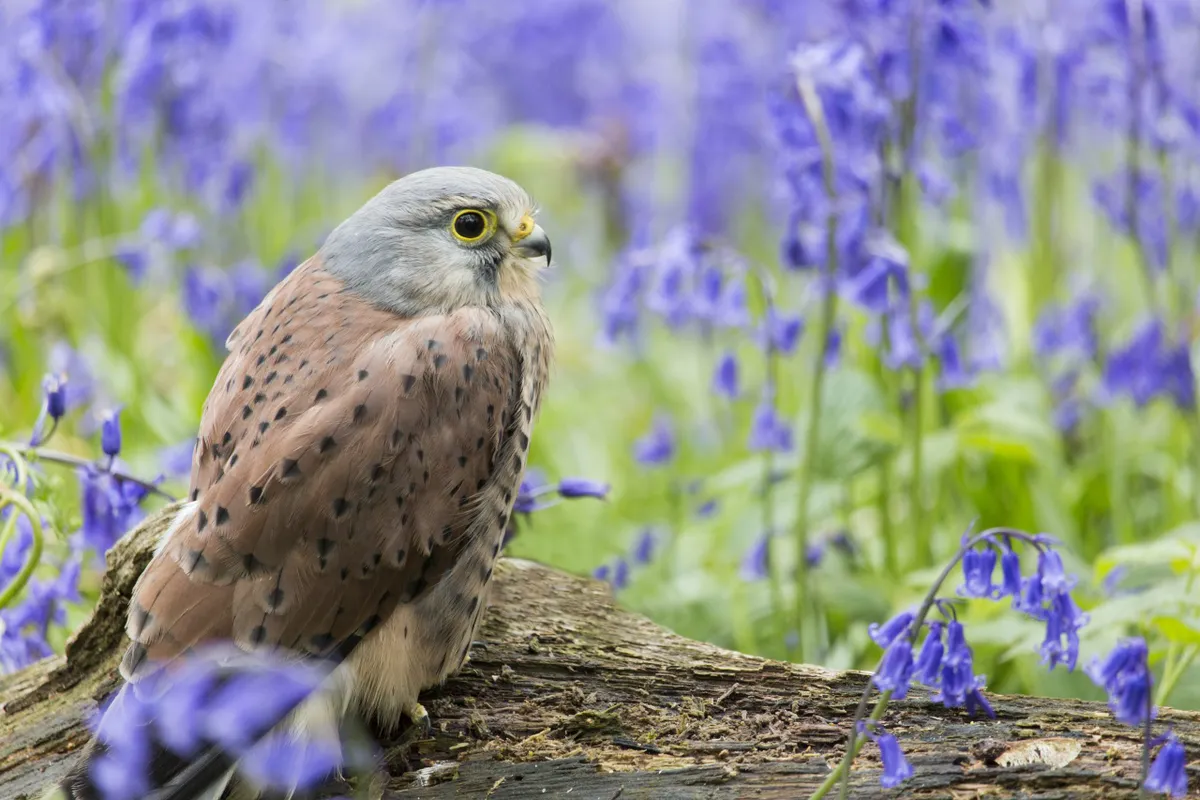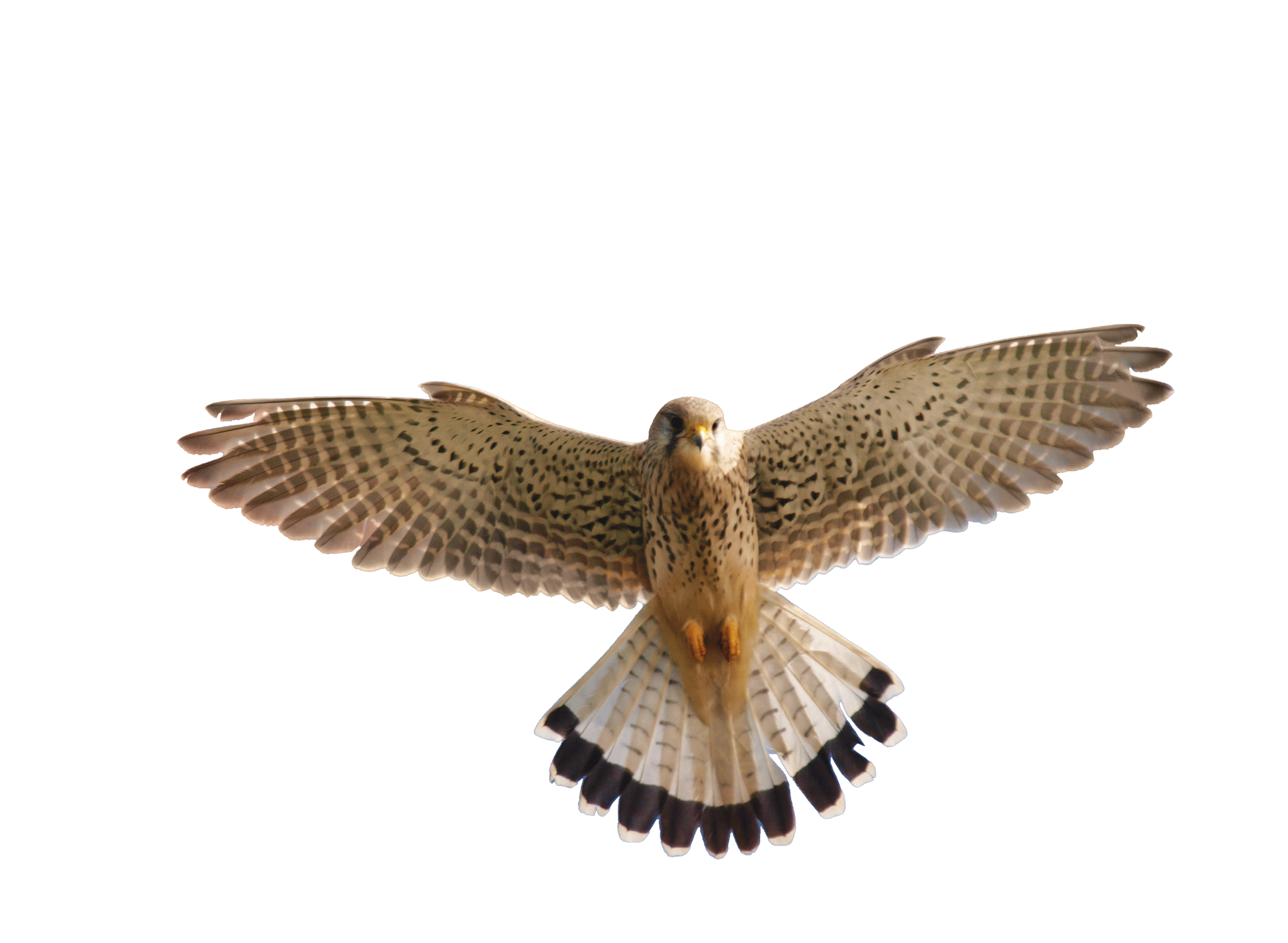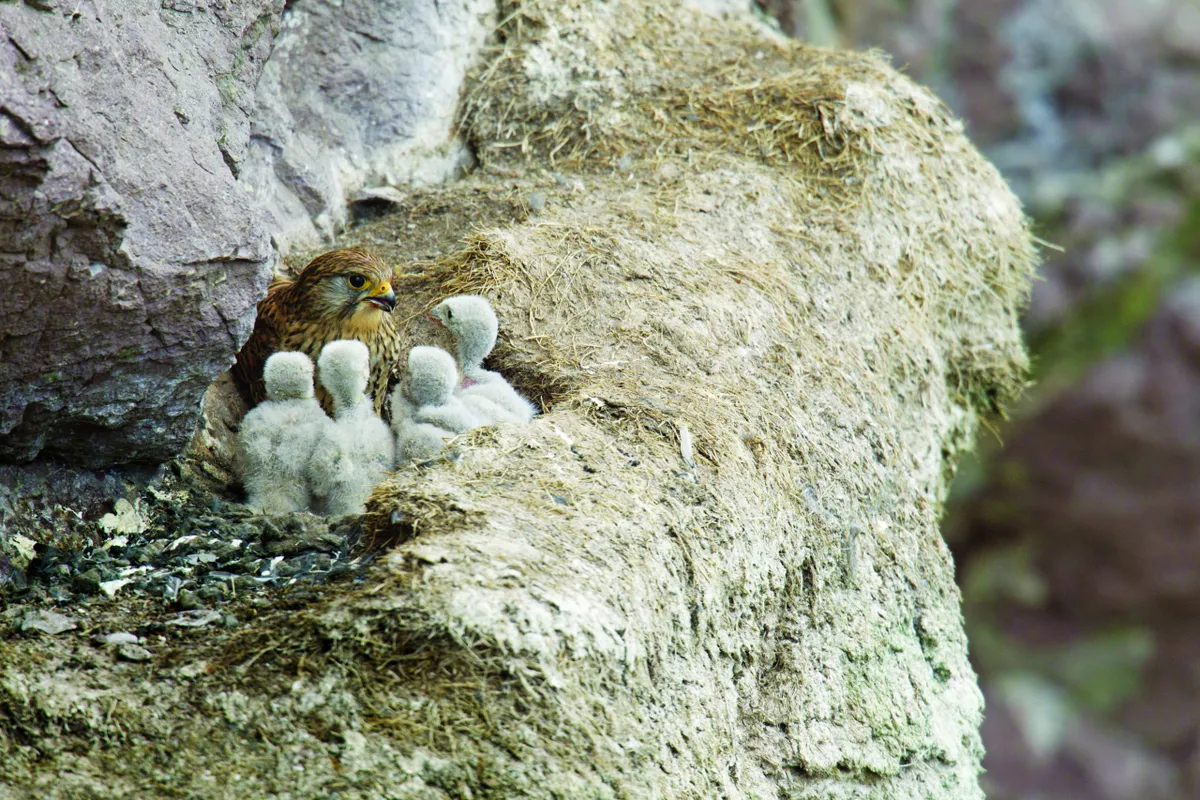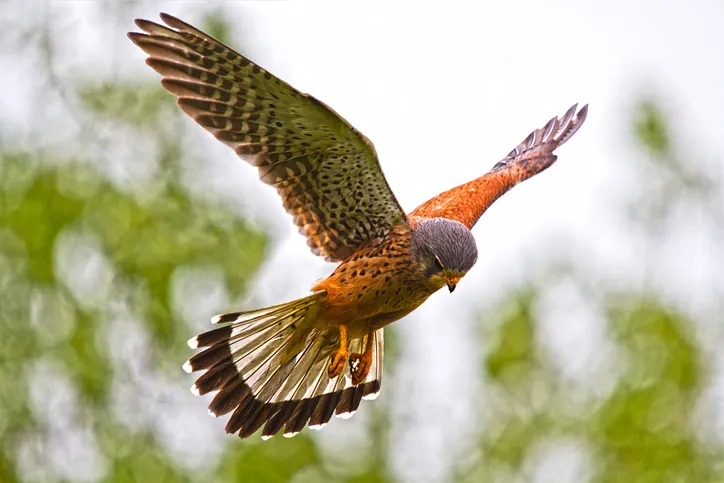Here is our expert guide to kestrels, also known as a bird of prey, found in the UK, including how to identify and best places to spot.
What is a kestrel?
Kestrels are a species of falcon. They are typically 32–35cm long, with a wingspan of 71–80cm, weighing between 156g and 252g.

How many kestrels are there in the UK?
Despite a significant decline in the 1970s and 1980s, there are still 31,000 pairs of kestrels in the UK, making it one of our most common birds of prey. However they are less commonly found in Northern Ireland and north-west Scotland.
How can I tell the difference between a kestrel and other falcons?
The kestrel’s most distinctive characteristic is its rare ability to hover, using its fanned tail to help keep it stabilised. Buzzards can also hover, but without a kestrel’s grace.
Male kestrels have slate-blue heads and dark, dagger-shaped triangles under the eye, with a buff chest spotted with black. In contrast, the larger sparrowhawk has horizontal barring across its breast.
In flight, the kestrel has much sharper wing tips and elastic wing beats, while the sparrowhawk is more hunched and tends to flap-flap-glide.
Although only slightly smaller, a merlin flies low and fast, while a hobby looks a lot darker, with bigger blotches on its breast and orange-red trousers.

When is the kestrel breeding season?
Kestrels are largely monogamous, and while a pair will separate over winter, they will come back together at the turn of the year when the male shows the female around potential sites, often in an area where they have nested before.
The female starts laying around the end of April, and begins incubating once there are three eggs in the clutch, often going on to lay up to three more. The eggs hatch after a month, with the young kestrels fledging after 5 weeks.

How long do kestrels live?
The lifespan of a kestrel is typically 4 years.

How far do kestrels fly?
Kestrels typically patrol a territory of between 4 to 8 square kilometres.
What do kestrels eat?
The vast proportion of a kestrel’s diet is made up of field voles — the most common British mammal. It will typically eat 2 or 3 a day, although in the breeding season the male will stockpile food, hiding it in a tree trunk or cavity before making deliveries back to the nest.
The falcons will also take wood mice and, if they need to, switch to small birds such as meadow pipits and yellowhammers. The remains of much bigger birds have also been found in kestrel nests, such as moorhen chicks and collared doves, alongside the bones of frogs. There are even records of kestrels taking fish, plucking them from the water osprey-like.
Kestrels also predate on house sparrows although a decline in these birds has made sightings of urban kestrels much rarer.
Related articles
What hunting techniques do kestrels use?
Kestrels have exceptional eyesight, which is key in helping them catch their prey.
While the human eye has around 38,000 photo receptors per millimetre, a kestrel has twice as many. As a result, a kestrel at the top of an 18m-tall tree would be able to see clearly a 2mm-long invertebrate on the ground.
Although hovering can be very effective in helping the birds see small mammals on the ground below, it uses a lot of energy, which is why the birds have developed other hunting techniques.
Masters of the ambush, at dusk kestrels will often sit patiently waiting for house sparrows to start to roost, before rising up and striking.
What threats do kestrels face?
As with so many birds of prey, kestrels have been persecuted over the years, especially when landowners realised they had a taste for pheasant chicks. Over one 30-year period in the late 1800s, one north Wales estate slaughtered 1,988 kestrels, drastically reducing the local population.
In coastal habitats, kestrels can be vulnerable to attacks from gulls and corvids.
What is a kestrel’s natural habitat?
Kestrels can be spotted in local parks, on the moors and hawking the edge of farmland. But one of the most dramatic places to see it is along the coast, from the saltmarshes of Pagham Harbour in West Sussex, to the sand dunes of Formby Point in Lancashire and the beaches of Fife.
On the coast, the kestrel can harness the breeze, says, using it to hover over a perfect habitat of rough grassland that hides a smorgasbord of small mammals.
Craggy cliffs offer perfect nesting sites, while the milder seaside climate is good for invertebrates, from earthworms to beetles, which kestrels will happily prey on, especially during the winter.
A downside of the seaside habitats for kestrels is the saltwater wetness. Kestrels, like most birds, have trouble metabolising salt.
Where are the best places to see coastal kestrels in the UK?
1. Pagham Harbour, West Sussex
A network of paths scoots along the sea’s edge, while a sheltered inlet is perfect for ducks, geese and waders. Peregrines and short-eared owls also hunt the rough.
2. Hayle Estuary
This superb birdwatching spot on the far western tip of Cornwall is also well-known for rare vagrants blown off course from the other side of the Atlantic.
3. Gibraltar Point
An unspoiled stretch of Lincolnshire coast with an internationally important mix of dunes, lagoons and saltmarsh. Look out for merlins and hen harriers, too.
4. Flamborough Head
This stunning stretch of heritage coast in East Yorkshire is a great place to see kestrels working the rough clifftop grassland. ywt.org.uk
5. Eden Estuary LNR
Just up the Fife coast from St Andrews, this is a fantastic coastal spot for waders and hosts the largest concentration of black-tailed godwits in Scotland.
6. Formby Point
With rough, tufted grassland, golf links are a good place to spot kestrels. The Lancashire coast between Blackpool and Liverpool has an abundance.
7. Conwy Estuary
Paths link the pools and lagoons of this RSPB wetland reserve on the edge of Snowdonia. Excellent hides and visitor centre, too.